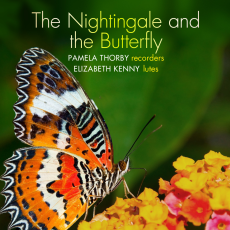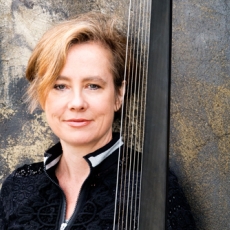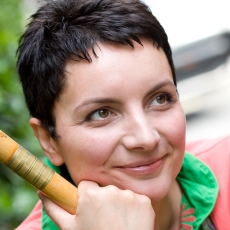The Nightingale and the Butterfly - Pamela Thorby & Elizabeth Kenny - International Record Review
The combination of recorder and lute is hardly novel, but what makes this disc innovative is the programme. Think of French Baroque flute music and there come to mind the Hotteterre brothers and the 'groaning' and 'sighing' transverse flute (as described by François Raguenet in 1702). However, as Pamela Thorby explains in her short booklet essay, there exists a small amount of music for solo recorder and basso continuo by French composers of the late seventeenth and early eighteenth century and this programme bears out her view of its high quality and great beauty.
That said, the only works specificaly for recorder in this recital are the Sonate pour la flûte à bec by Anne-Danican Philidor and the Suite No. 1 in A major (for flûte de voix - tenor recorder in D) and Suite No. 6 in F minor (for flûte du quatre - soprano recorder in B flat) by Charles Dieupart. Interestingly, Bach copied the two Dieupart suites for his personal library. They were originally published in 1701 in a collection of six harpsichord suites dedicated to Elizabeth, Countess of Sandwich, the daughter of the Earl of Rochester; but the second edition in 1702 specified the alternative of either the violin or recorder accompanied by either a bass viol or archlute.
Both the butterfly and nightingale of the title are provided by works intended for the transverse flute: the Deuxième Suite in G major from the viola da gamba virtuoso Louis Caix d'Hervelois's second book of suites for flute published in 1731, which includes a fast, flitting movement entitled 'Papillion', and the two 'Rossignol' pieces and a set of 'doubles' (or variations) on one of them from François Couperin's Troisième Livre de pièces de clavecin (1722), a footnote to which suggests the upper part can be played on the transverse flute. The balance of the music, by Robert de Visée, is for solo theorbo.
The recorder and archlute (as well as to a lesser extent the Baroque guitar) make a gorgeous sound together, the brilliance of the first complemented by the darker, liquid tones of the second. Elizabeth Kenny provides Thorby with a firm yet subtly nuanced harmonic and rhythmic support, her clean attack on each leading note balancing the louder sound of the recorder. Thorby plays with her customary vigour and agility, with generous and judiciously applied ornamentation. Although the Australian recorder player Ruth Wilkinson, in her 1995 recording of the complete set of Dieupar's suites, was more lively and had a fuller tone, Thornby's more varied phrasing gives her performances greater depth. Unlike the Australians, Thorby and Kenny also play all the repeats of each suite's 'ouverture' so as to balance better with the enuing sequence of dances.
Only Kenny's accounts of the solo theorbo pieces, though impressive enough, are less than completely satisfactory, principally owing to her habit of sliding, rahter modern guitar-like, up to notes and occasionally ornamenting her line with a dissonant vibrato. She also lacks a little rhythmic élan in the Passacaille, which she plays as a seperate piece.
As one would expect from the Linn label, the sound engineering is first-rate, far surpassing the older Australian recording in naturalness and spaciousness (not only in its superior high-definition SACD format but also when played as a conventional CD). Although Thornby's and Kenny's brief individual observations and Bernard Gordillo's short discussion of the pieces are useful, I would have preferred a more detailed and informative analysis of the French solo recorder repertoire and its composers.


